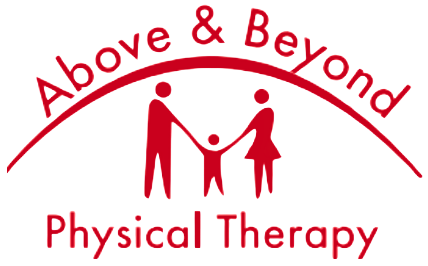ABOVE & BEYOND PHYSICAL THERAPY PRESENTS….TOTAL KNEE REPLACEMENTS: WHAT YOU NEED TO KNOW Source: OrthoInfo.org and more KNEE ANATOMY The knee joint consists of three bones: the large bone in the thigh called the femur, …
ABOVE & BEYOND PHYSICAL THERAPY PRESENTS….
TOTAL KNEE REPLACEMENTS: WHAT YOU NEED TO KNOW
Source: OrthoInfo.org and more
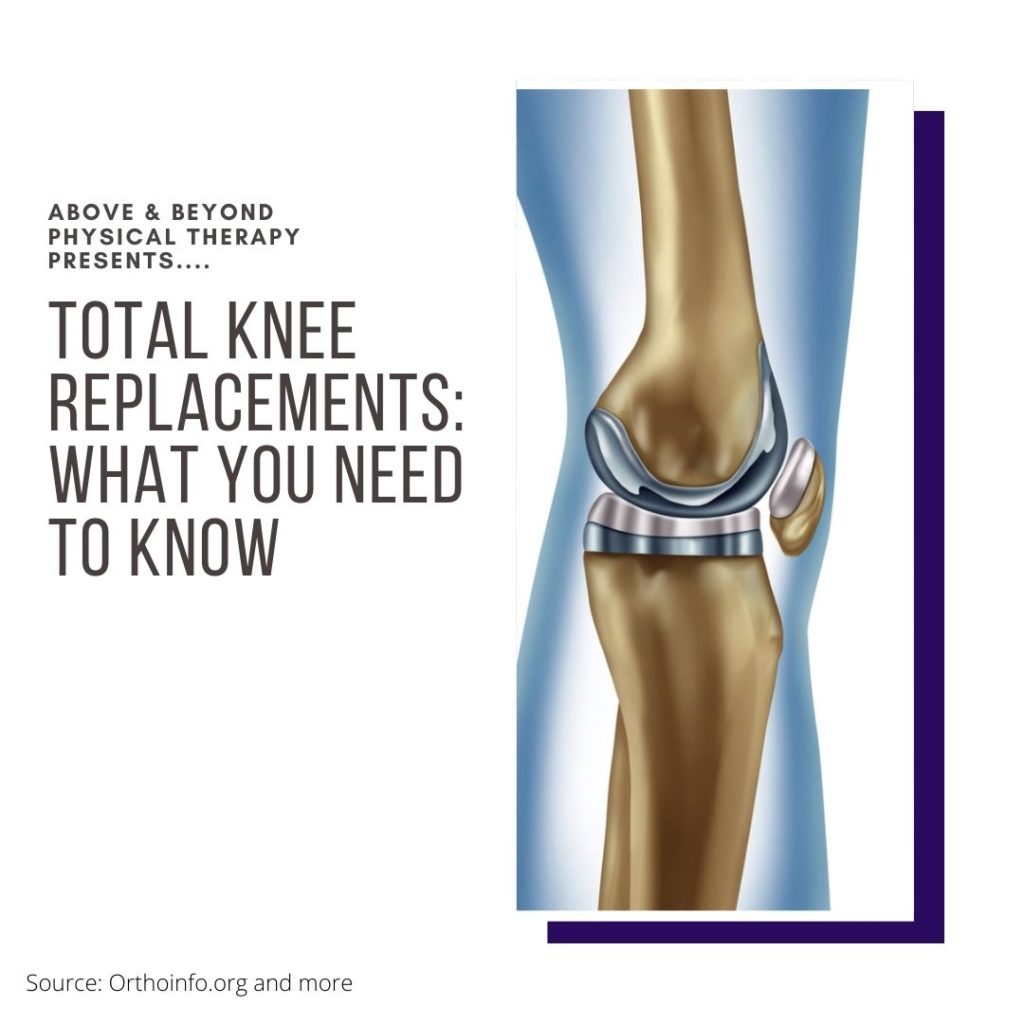
KNEE ANATOMY
The knee joint consists of three bones: the large bone in the thigh called the femur, the shin bone known as the tibia, and the kneecap, or patella. On the surface of the tibia, rests menisci which are structures made of cartilage that aid in cushioning the joint.

KNEE REPLACEMENT ANATOMY
Your doctor will recommend a TKA if you have severe arthritis in your joint limiting your everyday life. This occurs from wear and tear of the knee that happens over time, causing the menisci to break down and the bones to rub together causing pain and stiffness.

WHAT HAPPENS DURING SURGERY?
- The damaged surfaces of the tibia and femur are removed along with a small amount of bone.
- The metal implants are then positioned to replace the area that was removed, creating a new joint surface.
- The kneecap is cut and resurfaced with a plastic button, however not all surgeons perform this.
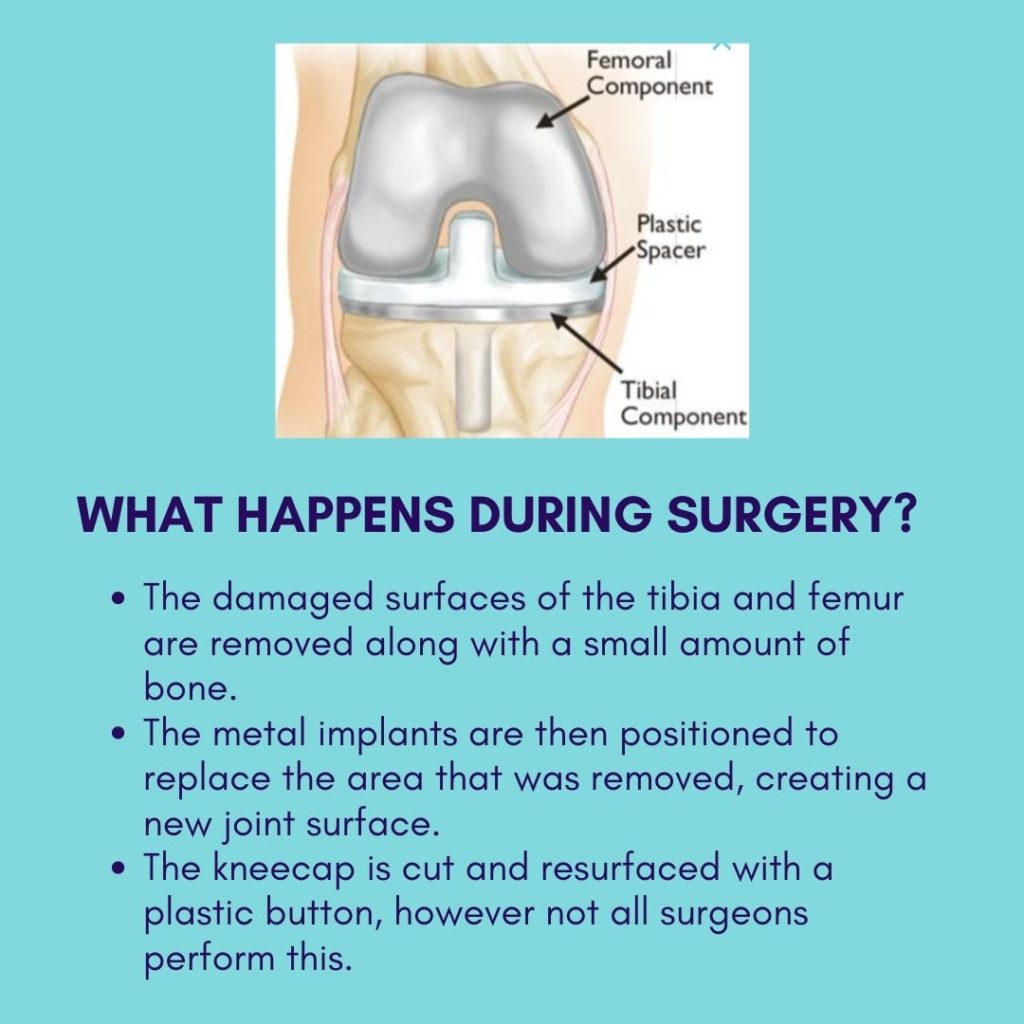
WHAT TO EXPECT DURING YOUR HOSPITAL STAY
- The surgical procedure takes between 1 and 2 hours
- You may be sent home the day of your surgery, or your stay may last 1–3 days depending on any underlying medical conditions you may have
- After surgery, you will feel some pain. Pain meds will be prescribed as a form of short term relief. Alternative pain management options such as NSAIDs are also available to you
- Blood clot prevention will begin right away. This may consist of compression boots, blood thinners, and support hose (see right).
- Foot/Ankle motion will be encouraged immediately to promote blood flow
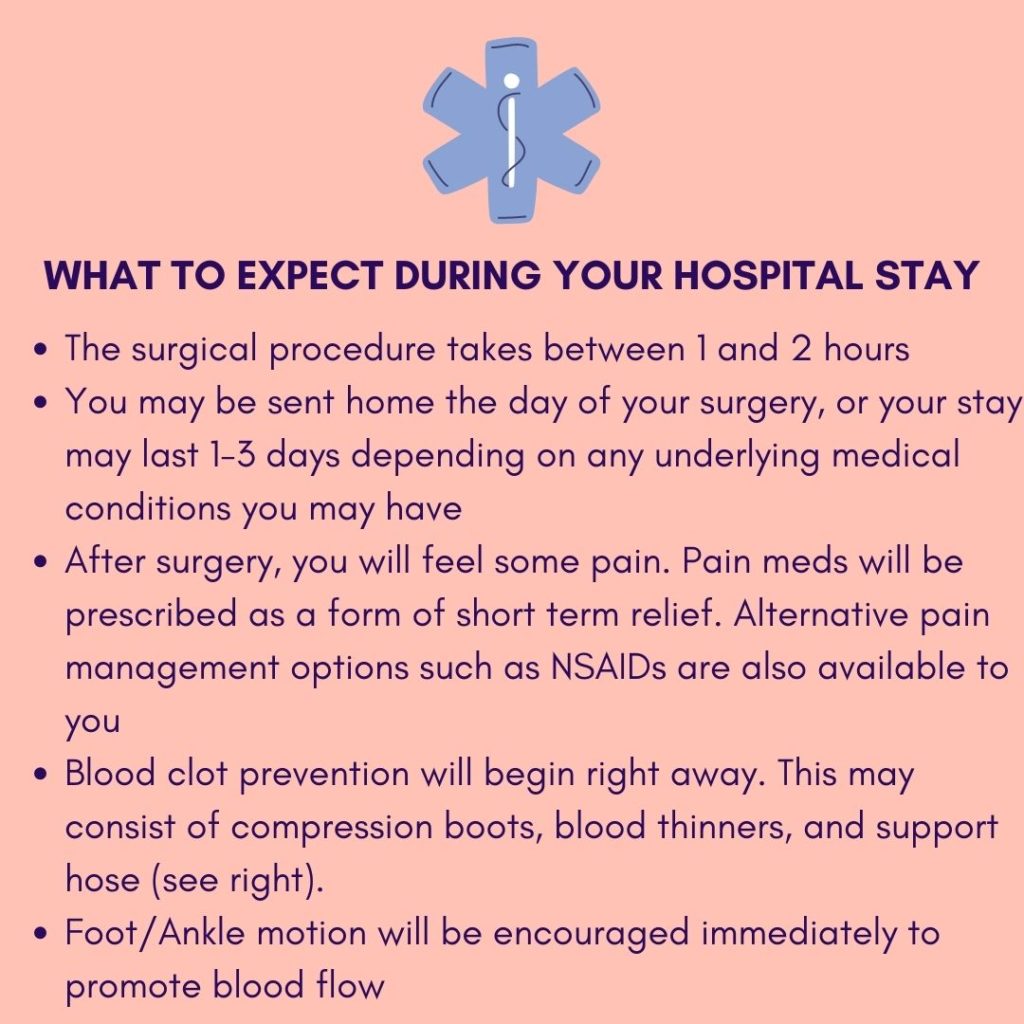
PHYSICAL THERAPY IN THE HOSPITAL
- Patients may begin exercising their knee hours after surgery.
- A physical therapist will treat you in the hospital, showing you exercises to help strengthen your leg and restore knee motion. They will also show you how to walk with a walker and get in and out of your car.
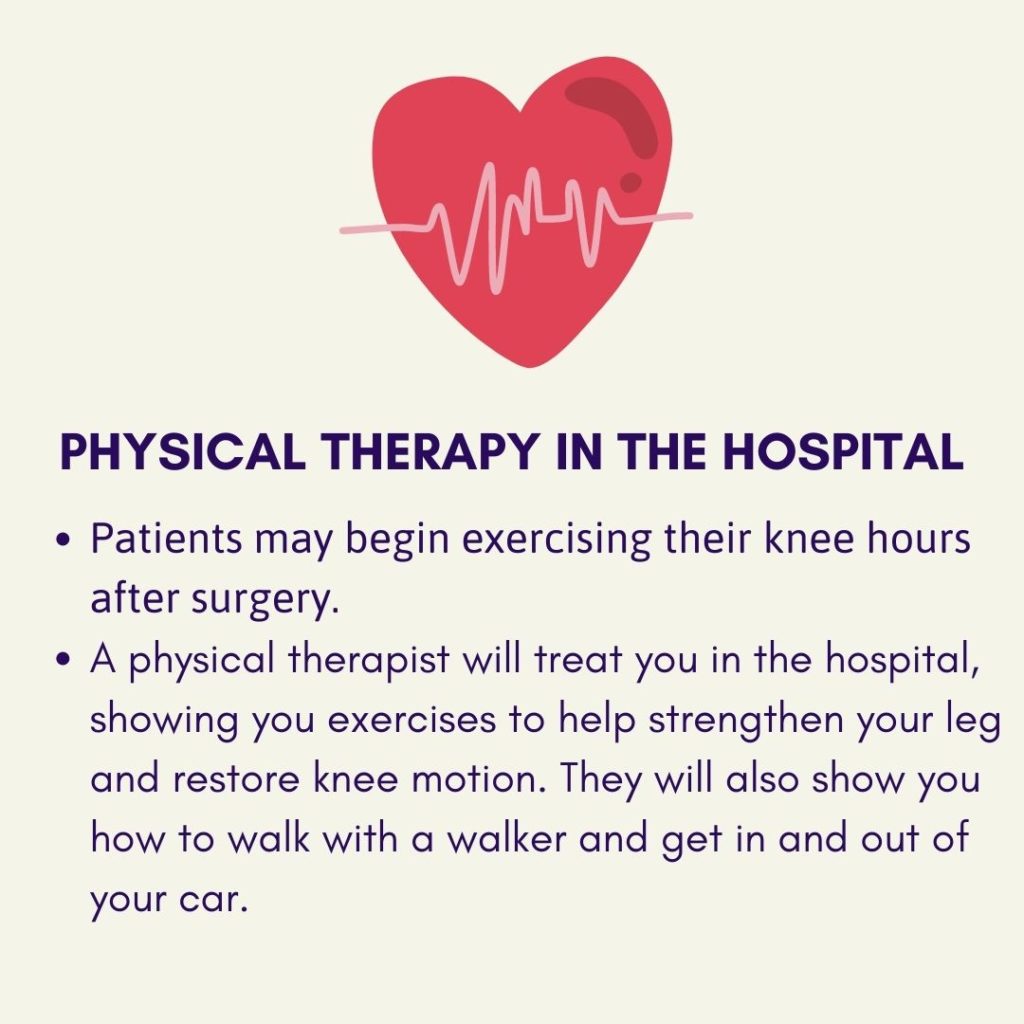
OUTPATIENT PHYSICAL THERAPY (AVG TIME NEEDED 6–12 WEEKS)
Physical therapy will consist of:
○ Strengthening exercises
○ Balance training
○ Functional and activity specific training
○ Soft tissue massage to reduce pain, swelling and promote muscle relaxation
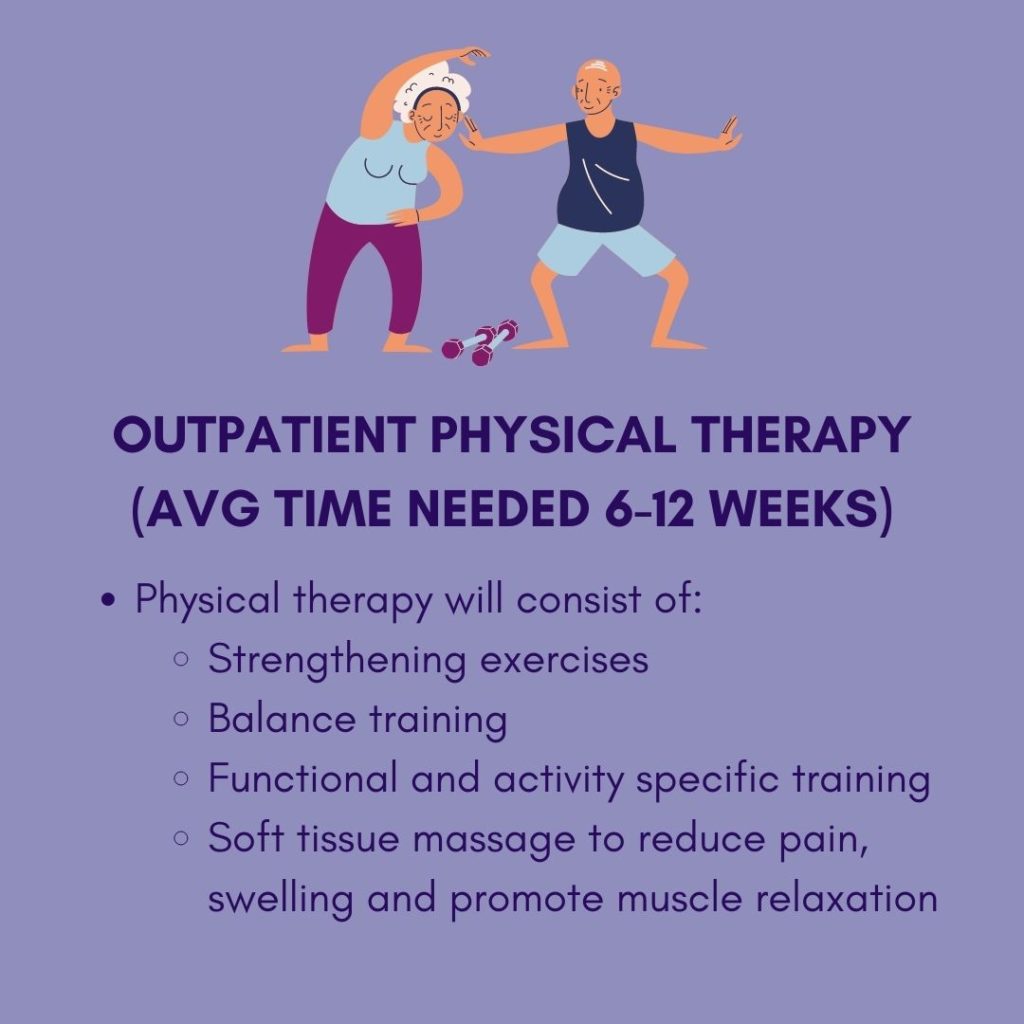
RANGE OF MOTION (ROM) EXPECTATIONS
- Within the first two weeks, the goal ROM for knee flexion (how far you can bend your knee back) is 90 deg, and the goal for ROM for knee extension (the ability to straighten the knee) is 0 deg.
- End knee flexion goal: 125 deg
- End extension goal: 0 deg
- A limited flexion/extension angle will influence your ability to walk normally, and complete activities of daily living, so it is crucial that you work hard in therapy to progress your range
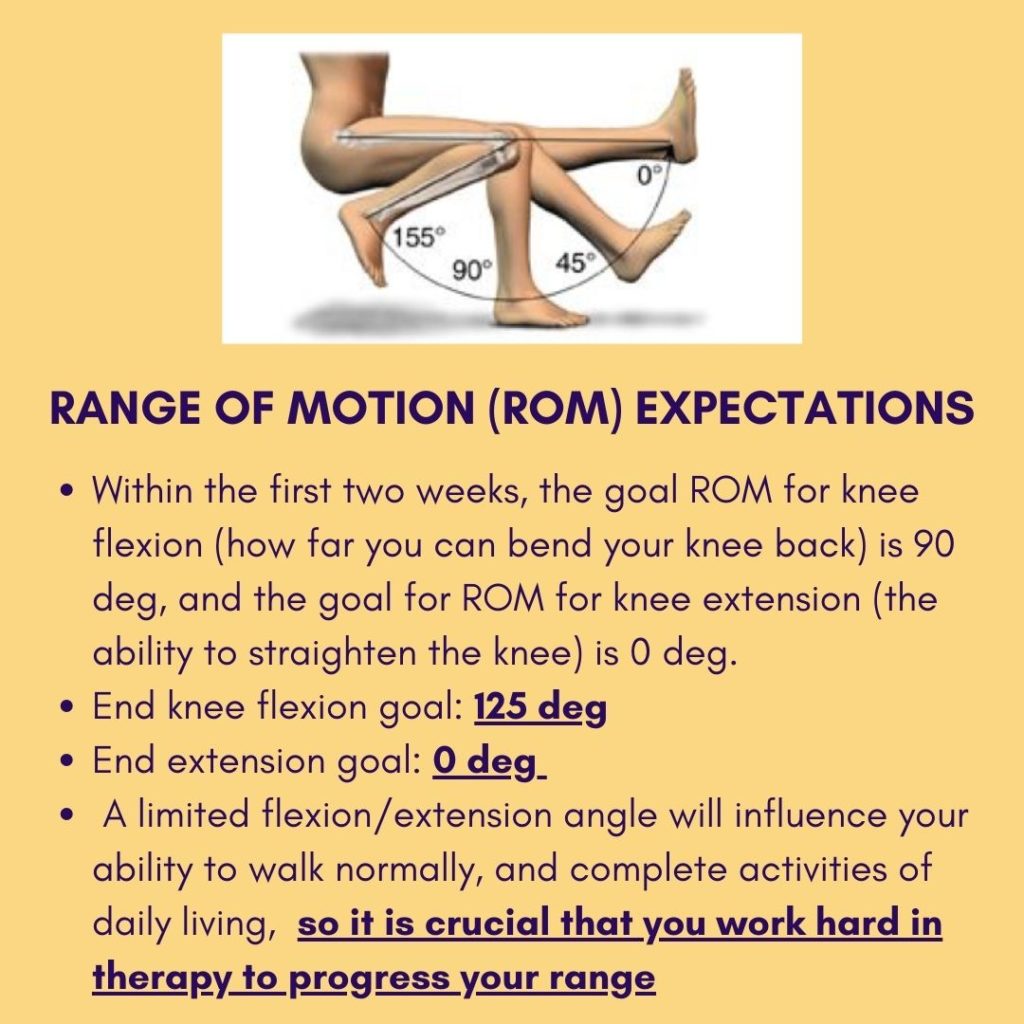
THINGS TO NOTE
- Your surgeon will likely advice you not to perform high impact activity for the rest of your life so as to avoid excess wear and tear on the plastic spacer.
- Activities you can perform following surgery: walking, swimming, driving, light hiking, biking, ballroom dancing, low impact sports
- It’s important to remember that not everyone heals and progresses in the same way or at the same rate. Your recovery process is entirely up to you and the hard work you’re willing to put in to return to a normal life.
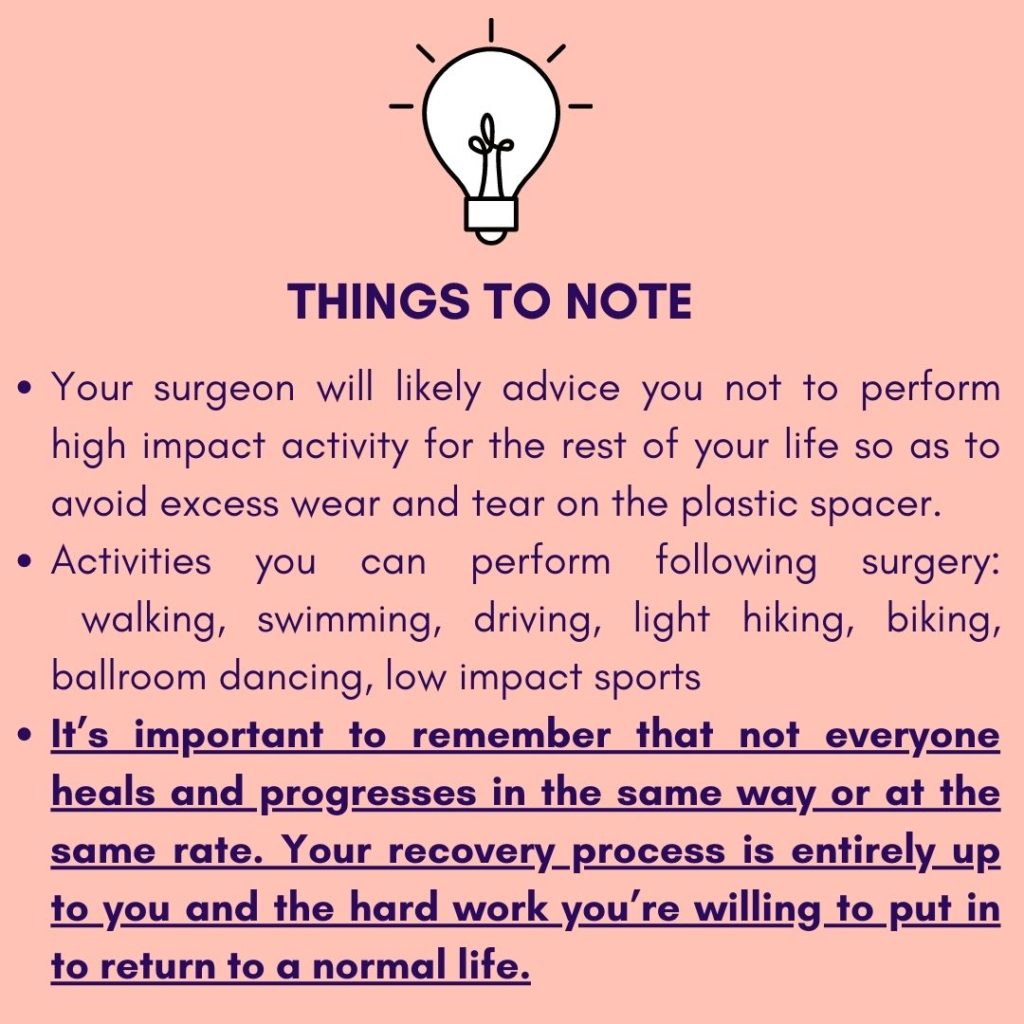
Request an Appointment
Enter your details below to take your first step toward recovery.
